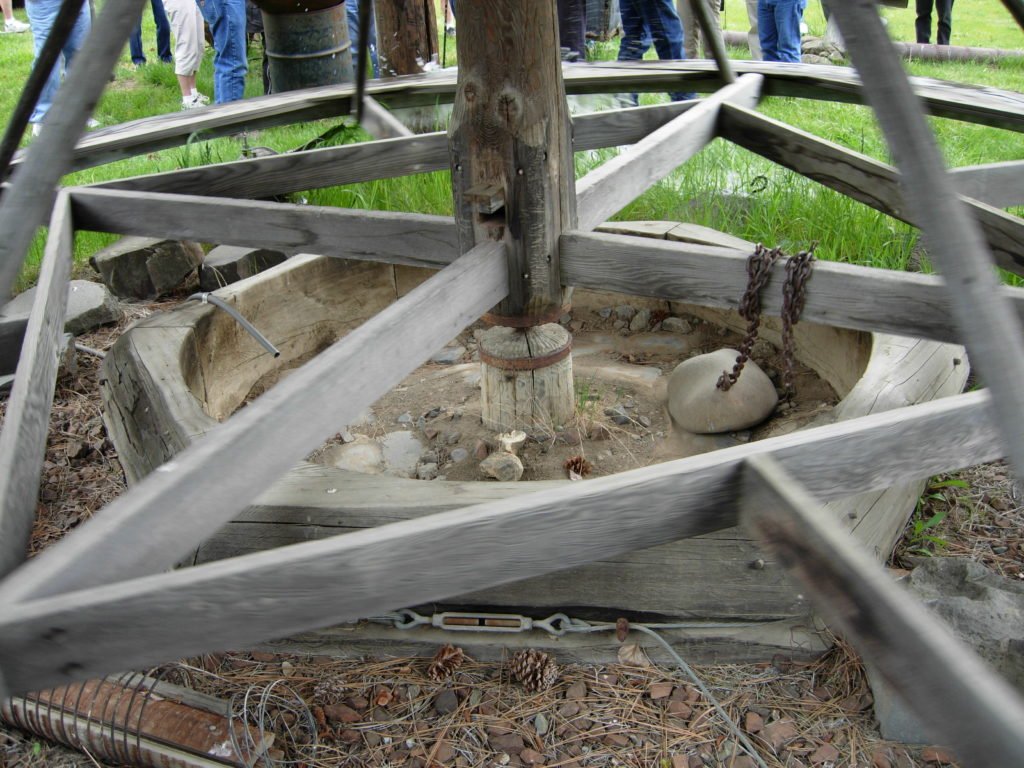Gold Prospecting History
Arizona gold prospector Mike talks about one of his greatest finds, a real piece of gold prospecting history! An arrastra drag stone!
This is really something that you would expect to see in a museum
I find it fascinating to see the ingenuity and creativity of the old-time gold prospectors.
Gold Prospecting History

Photo credit: By Todd Petit from East Wenatchee, WA, USA – The arrastra turns dragging the rock…Uploaded by PDTillman, CC BY 2.0, https://commons.wikimedia.org/w/index.php?curid=14667887.
,A gold prospector in 1989, using a metal detector, found a huge gold nugget that weighed 389 troy ounces! The nugget was found somewhere in the Mexican Sonoran Desert, about 100 miles south of the Arizona border. Because the nugget’s shape resembles a boot, it was named the Boot of Cortez.
From Wikipedia, the free encyclopedia:
An arrastra (or arastra) is a primitive mill for grinding and pulverizing (typically) gold or silver ore. Its simplest form is two or more flat-bottomed drag stones placed in a circular pit paved with flat stones, and connected to a center post by a long arm. With a horse, mule or human providing power at the other end of the arm, the stones were dragged slowly around in a circle, crushing the ore. Some arrastras were powered by a water wheel; a few were powered by steam or gasoline engines, and even electricity. Arrastras were widely used throughout the Mediterranean region since Phoenician times. The Spanish introduced the arrastra to the New World in the 16th century.
The word “arrastra” comes from the Spanish language arrastrar, meaning to drag along the ground. Arrastras were suitable for use in small or remote mines, since they could be built from local materials and required little investment capital. For gold ore, the gold was typically recovered by amalgamation with quicksilver. The miner would add clean mercury to the ground ore, continue grinding, rinse out the fines, then add more ore and repeat the process. At cleanup, the gold amalgam was carefully recovered from the low places and crevices in the arrastra floor. The amalgam was then heated in a distillation retort to recover the gold, and the mercury was saved for reuse.
For silver ore, the patio process, invented in Mexico in 1554, was generally used to recover the silver from ore ground in the arrastra.
Gold Prospecting History
#######
Be sure to view our Gold nuggets for sale.
View our Natural Silver specimens
Also see the most expensive type of gold nuggets, the Crystalline Gold Nuggets
Subscribe to our Youtube Arizona Gold Prospecting channel
1 Comment
gold prospecting · July 15, 2022 at 8:48 am
Great gold prospecting info.